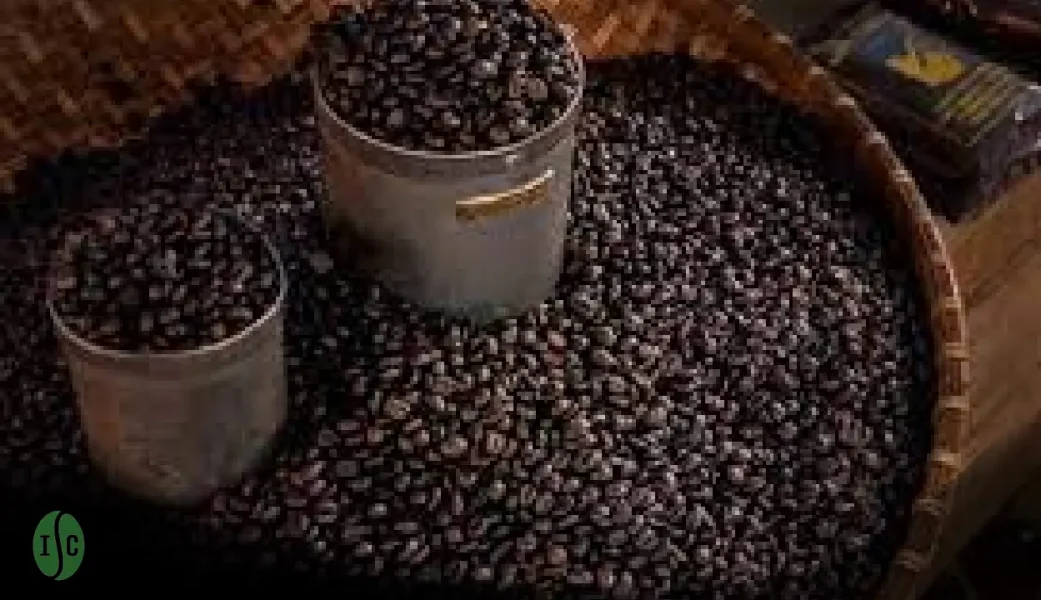The finest coffee Indonesian fuses volcanic terroir, meticulous processing, and intergenerational craft into cups that are sweet, layered, and unmistakably regional. From Sumatra’s palm-sugar depth to Java’s silk-smooth balance and Bali’s bright aromatics, Indonesia’s archipelago delivers a spectrum of flavor architectures that reward precise brewing and thoughtful storage.
Why Indonesian coffee commands loyalty
Indonesia’s coffee belt sits on mineral-rich, high-elevation slopes with wide day–night temperature swings. Slow cherry maturation concentrates sugars and aromatics, while shade-grown agroforestry stabilizes yield and cup quality. Producers deploy washed, honey, natural, and wet-hulled methods to tune acidity, body, and finish with intent. This interplay of terroir × process × craft gives drinkers repeatable signatures across regions and harvests.
Diverse flavors, one nation: regional signatures
Sumatran majesty — bold, earthy harmonies
Wet-hulled Arabica from Sumatra reads cocoa, palm sugar, cedar, clove, with a syrupy body and long finish. It anchors milk drinks without losing origin character. Explore the region’s profile and brewing approach in Sumatra coffee: taste characteristics and best methods.
Javanese elegance — smooth and balanced serenity
Classic Java Arabica presents milk-chocolate sweetness, soft citrus, and tea-like structure. Its even acidity and clean aftertaste make it a natural fit for pour-over and batch brewers where clarity matters.
Balinese bliss — aromatic and lively harmony
Bali’s highlands produce bright citrus, vanilla, and floral lift over a medium body. Honey and natural lots shine in manual brews that preserve top-note aromatics.
Toraja depth — spice and sandalwood nuance
Sulawesi’s Toraja coffees layer sandalwood, baking spice, and dark caramel over a plush texture, ideal for immersion brews and medium roasts that accentuate sweetness. Get a primer on this heritage origin in A guide to Toraja coffee.
The craftsmanship behind excellence
Cultivating with intent
Selective picking at peak ripeness, immediate float sorting, and shade management raise sweetness and reduce defects. Intercropped systems recycle nutrients and protect soil structure, supporting consistent mineral uptake and cleaner cups.
Meticulous processing: wet vs. dry
- Washed: maximum clarity, articulate acidity, transparent terroir.
- Honey: layered sweetness, rounded acidity, enhanced mouthfeel.
- Natural: fruit-forward aromatics, dense sweetness, bigger body.
- Wet-hulled: signature Indonesian depth, palm-sugar richness, low astringency.
For a full walkthrough of what each path does in the cup, study specialty coffee processing.
The art of roasting
Lighter roasts foreground citrus and florals; medium roasts lock in caramel and cocoa; medium-dark can highlight spice without tipping into ash when development is controlled. Indonesian profiles reward measured development time over brute darkness.
Brewing the finest Indonesian coffee at home
Choose and store like a pro
- Buy fresh, traceable lots with a printed roast date.
- Align roast to method: light–medium for filter, medium for immersion or milk drinks.
- Protect aromatics with airtight, opaque containers away from heat and light—complete protocol here: store coffee beans.
Method blueprints (exact, repeatable)
Pour-over (V60/Kalita) — clarity and sweetness
- 18 g coffee → 270 g water (1:15) at 92–95 °C
- Medium grind; total time 2:45–3:30
- Bloom 40–50 g for 30–45 s; finish with steady, centered pours
Timing discipline lives in brewing time: pour-over coffee.
French press — body without muddiness
- 28 g → 392 g (1:14) at 93–96 °C
- Medium-coarse; 4:00 steep
- Break crust, skim oils, press gently, decant immediately
Ratio and texture tuning: the art of French press: coffee ratio.
Fast tuning rules
- Bitter/astringent → coarser grind, −1–2 °C, shorter contact
- Sour/thin → slightly finer, +1–2 °C, longer contact
Indonesian coffee on the global stage
Rising appreciation
Competitions, cupping labs, and direct-trade programs have spotlighted Indonesia’s process diversity and regional precision, moving perception beyond “dark and earthy” toward clean, sweet, and distinctive. As buyers taste washed Bali next to wet-hulled Sumatra, the archipelago’s range becomes undeniable.
Challenges and innovations
Climate variability and logistical complexity demand better drying infrastructure, moisture control, and fast financing after delivery. Cooperatives and exporters are investing in raised beds, covered patios, and QC labs—real upgrades that translate directly to cleaner, sweeter cups for consumers.
Awards and recognition
Juried accolades now regularly cite Indonesian lots for balance, sweetness, and originality, validating producers’ focus on ripe picking, careful fermentation, and precise drying.
FAQs
What defines the finest coffee Indonesian in the cup?
Aromatics that open with cocoa or florals, sweet, integrated acidity, and a finish that lingers palm-sugar or spice—delivered without bitterness when brewed to ratio and temperature.
Washed, honey, natural, or wet-hulled—where should I start?
Begin with washed for clarity and terroir, move to honey for layered sweetness, then natural for fruit intensity. Explore wet-hulled when you want Sumatra’s signature depth.
Which method showcases Indonesia’s profiles best at home?
Use pour-over for Java and Bali clarity, French press for Sumatra and Toraja body. Follow the linked blueprints for repeatable sweetness and clean finishes.
How do I keep flavor consistent week to week?
Weigh dose and water every brew, lock your water source, adjust grind in small steps, and log changes so successful cups become your baseline.
I’m new to Indonesian coffee—where should I begin?
Start with a balanced Sumatra or Java. Then compare a honey-processed Bali with a washed Java to feel how process alone reshapes the same core attributes.
Bottom line: the finest coffee Indonesian is precision from soil to sip. Choose fresh, process-transparent lots, store them correctly, and brew to a proven recipe. Your reward is a cup with layered sweetness, articulate acidity, and origin character that stays memorable long after the last sip.

